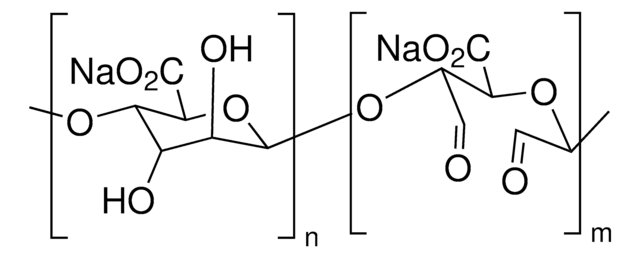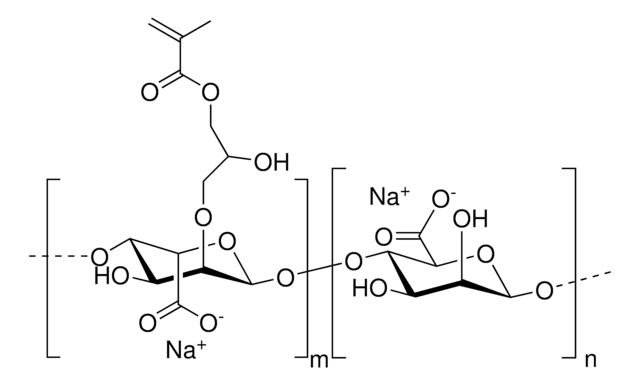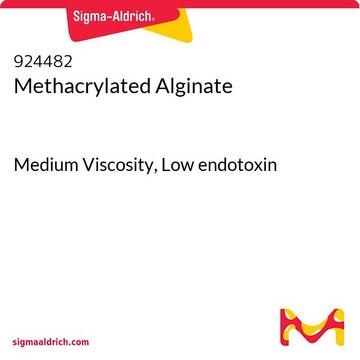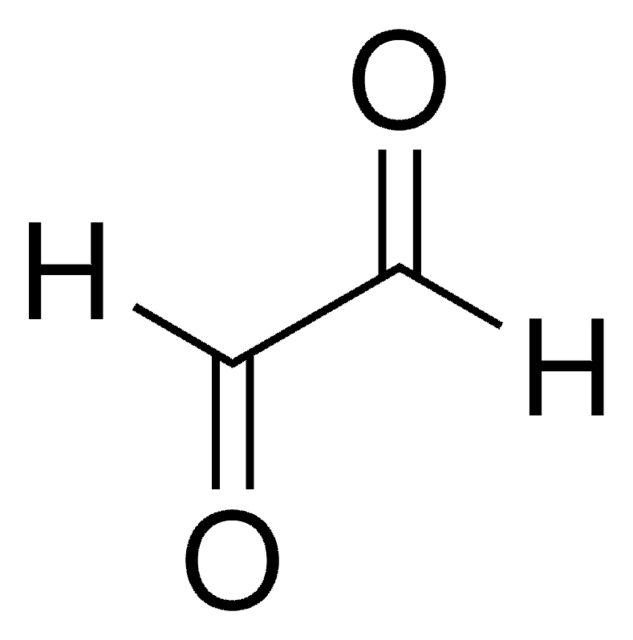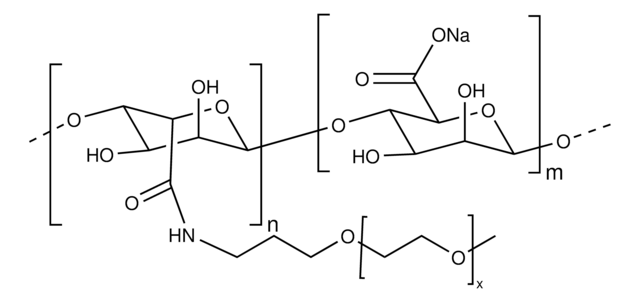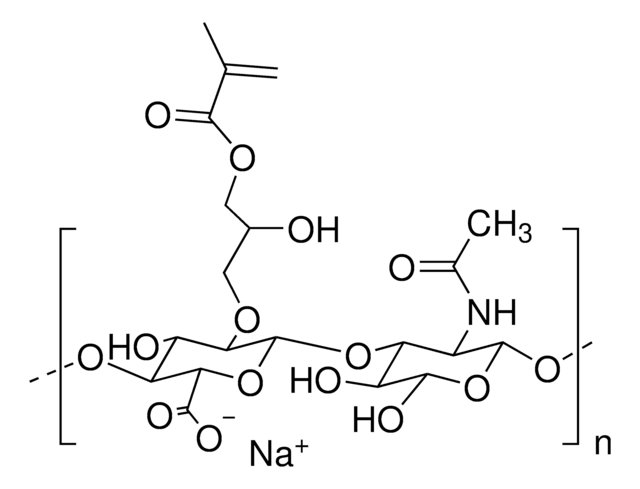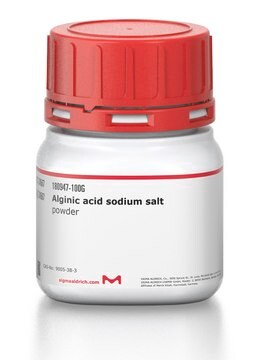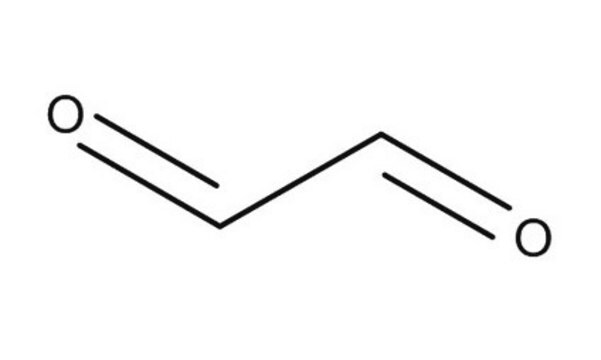推荐产品
品質等級
描述
Degree of functionalization: 15-25%
形狀
powder
顏色
white to off-white
適合性
conforms to structure for NMR
儲存溫度
2-8°C
SMILES 字串
CO[C@H]1[C@@H](O)[C@H](O)[C@H](O/C(C=O)=C\C([O-])=O)O[C@@H]1C([O-])=O.OC2[C@H](OC(O)C=O)[C@@H](C([O-])=O)O[C@@H](OC)[C@H]2O
正在寻找类似产品? 访问 产品对比指南
應用
Alginate is an anionic polysaccharide that is widely used in pharmaceutical and biomedical applications due to its non-animal origin, low toxicity, biocompatibility, and biodegradability. Alginate hydrogels are commonly used to fabricate tissue engineering scaffolds, bioinks for 3D bioprinting, and nanocarriers for drug and gene delivery.
Alginate is commonly crosslinked into a hydrogel via ionic-crosslinking with divalent cations (e.g., Ca2+). To prevent matrix degradation, alginate can be functionalized with reactive groups that can be chemically crosslinked, such as aldehydes. Aldehyde- functionalized alginate can be used to prepare hydrogels by reaction with amine groups, such as gelatin through Schiff-base reaction to form a chemical hydrogel. This material can be used in a variety of biomedical applications such as the delivery of drugs, cells, or biomolecules in different tissues, wound healing, and muscle and bone tissue engineering.
Alginate is commonly crosslinked into a hydrogel via ionic-crosslinking with divalent cations (e.g., Ca2+). To prevent matrix degradation, alginate can be functionalized with reactive groups that can be chemically crosslinked, such as aldehydes. Aldehyde- functionalized alginate can be used to prepare hydrogels by reaction with amine groups, such as gelatin through Schiff-base reaction to form a chemical hydrogel. This material can be used in a variety of biomedical applications such as the delivery of drugs, cells, or biomolecules in different tissues, wound healing, and muscle and bone tissue engineering.
儲存類別代碼
11 - Combustible Solids
水污染物質分類(WGK)
WGK 3
閃點(°F)
Not applicable
閃點(°C)
Not applicable
B Balakrishnan et al.
Carbohydrate research, 340(7), 1425-1429 (2005-04-28)
Periodate oxidation of sodium alginate in aqueous solution as well as a dispersion in 1:1 ethanol-water was examined. The oxidation proceeded smoothly in both media, and the kinetics of oxidation was surprisingly similar. Polymer cleavage was observed in both media
Biji Balakrishnan et al.
Biomaterials, 26(18), 3941-3951 (2005-01-01)
The injectable polymer scaffolds which are biocompatible and biodegradable are important biomaterials for tissue engineering and drug delivery. Hydrogels derived from natural proteins and polysaccharides are ideal scaffolds for tissue engineering since they resemble the extracellular matrices of the tissue
我们的科学家团队拥有各种研究领域经验,包括生命科学、材料科学、化学合成、色谱、分析及许多其他领域.
联系技术服务部门